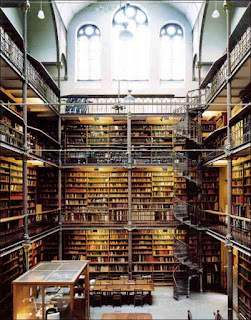 As I had opined in previous posts, the next stage of the Web will be built on the existing infrastructure of Web 2.0. One of the foremost thinkers of the Semantic Web makes an insightful analysis of the progress from Web 2.0 to the Semantic Web. Along with Jennifer Golbeck, James Hendler puts forth the idea of Metcalfe's Law, arguing that value increases as the number of users increases. Because of this, potential links increase for every user as a new person joins. Not surprisingly, Metcalfe's Law is the essence of Web 2.0.
As I had opined in previous posts, the next stage of the Web will be built on the existing infrastructure of Web 2.0. One of the foremost thinkers of the Semantic Web makes an insightful analysis of the progress from Web 2.0 to the Semantic Web. Along with Jennifer Golbeck, James Hendler puts forth the idea of Metcalfe's Law, arguing that value increases as the number of users increases. Because of this, potential links increase for every user as a new person joins. Not surprisingly, Metcalfe's Law is the essence of Web 2.0.As the number of people in the network grows, the connectivity increases, and if people can link to each other's content, the value grows at an enormous rate. The Web, if it were simply a collection of pages of content, would not have the value it has today. Without linking, the Web would be a blob of disconnected pages.
As information professionals and librarians, we shouldn't miss out on the obvious links between Web 2.0 and the Semantic Web. Social networking is critical to the success of Web 2.0; but by combining the social networks of Web 2.0 with the semantic networks of the Semantic Web, a tremendous value is possible. Here's a scenario from Tom Gruber which I find very compelling:
Genius.
Real Travel "seeds" a Web 2.0 travel site with the terms from a gazetteer ontology. This allows the coupling of place names and locations, linked together in an ontology structure, with the dynamic content and tagging of a Web 2.0 travel site. The primary user experience is of a site where travel logs (essentially blogs about trips), photos, travel tools and other travel-related materials are all linked together. Behind this, however, is the simple ontology that knows that Warsaw is a city in Poland, that Poland is a country in Europe, etc. Thus a photo taken in Warsaw is known to be a photo from Poland in a search, browsing can traverse links in the geolocation ontology, and other "fortuitous" links can be found. The social construct of the travel site, and communities of travelers with like interests, can be exploited by Web 2.0 technology, but it is given extra value by the simple semantics encoded in the travel ontology.











